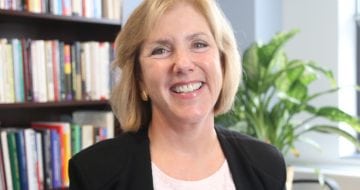This is part three of a three-part blog series on alternative education. Please read the first and second posts, found here.
I am lucky to call all the participants on AYPF’s recent study tour to Denver, Colorado friends. They are dedicated educators and youth advocates who often approach policy with a variety of perspectives and ideas different than my own. And, for that reason, they guide me towards a few critical policy issues that haven’t yet made it to my radar screen.
Terminology: Difference between “Youth” and “Student”
Anyone who has worked in policy knows that language matters: a “could” vs. a “should” is the difference between a suggestion and a directive. For youth policy, the terminology we use to refer to young people influences their ability to access educational opportunities and resources. When we mention students, we reference young people who are associated with a school. Yet, we know that there are many young people who are not engaged or enrolled at an educational institution and typically referred to as a dropout. Thus, does the language create an artificial barrier to direct resources to at-risk students or young people who are not enrolled in school? Based upon conversations with my friends, I’ve learned that this terminology could also could prevent many of the community-based institutions who are coordinating supports for at-risk youth from accessing additional state funding.
High School Graduation: Barrier or Opportunity?
My friends were not surprised that I steered our conversation toward the use of extended-year graduation rates. ESSA clearly signals that states can and could (although I’d read it as a should) be using and reporting five-, six-, etc. year graduation rates. Use of extended-year graduation rates is necessary for alternative schools who are serving a student population who have been out of school or off track/out of sync with their original four-year high school cohort. Honestly, folks, this is a conversation we shouldn’t still be having as the value of extended-year graduation rate is critical to promoting a portfolio of high quality educational options for all students inclusive of alternative setting across a district and state.
Calculation of high school graduation rates (four- and extended-year) are ONLY inclusive of high school diplomas, not any high school equivalency credentials such as GEDs or HiSet. Although you can include a high school equivalency credential in a completer rate, for accountability purposes these students with a non-diploma credential are essentially considered dropouts. For any young person, the achievement of earning a high school equivalency credential is a major milestone and isn’t accurately represented by a “dropout” categorization. Additionally, from the policy perspective, we should remove the disincentive for supporting high school equivalency credential programs because every student succeeds means we should support all students to all forms of high school graduation.
Finally, as we saw in Colorado, many students in alternative education programs are encouraged to wait to complete the high school diploma requirements or their GED tests until just before their 21st birthday or until they have earned at least one postsecondary credential through concurrent enrollment. These programs make this suggestion because the completion of high school (i.e., graduation) marks the end of a student’s ability to access K-12 funding through concurrent enrollment to cover the cost of their postsecondary classes. This begs the question: is high school graduation creating an artificial barrier to accessing low- to no-cost postsecondary education and training?
Expanding Accountability to All Institutions that Educate
Mirroring the conversation about youth vs. students, we need to broaden our understanding of the institutions across our communities that are providing educational experiences. In Colorado, we visited a Gateway to College program, a national program model where community colleges in partnership with K-12 districts provide high school diploma completion through enrollment in community college courses. Yet, in order to utilize K-12 student funding, Colorado needed to pass legislation to allow for the per pupil allotment funding to go to a community college.
During our discussions, it was brought to my attention that we often overlook a number of institutions within our communities who are providing educational services to young people, such as juvenile detention and secure facilities and psychiatric institutions. Because some of these institutions serve students for a short period of time, it is challenging to consider how we might hold them accountable, but we do need to create a monitoring process emphasizing high quality and continuous improvement to ensure that the progress of all students is accounted for.
Hats out to all my new friends to pushing my own thinking and helping to refocus AYPF’s work in the space. And to you, our dear readers, just think of AYPF as your new friend who will be providing additional tools and resources to push your own thinking on critical issues in alternative education. Stay tuned….
Jennifer Brown Lerner is Deputy Director at the American Youth Policy Forum






